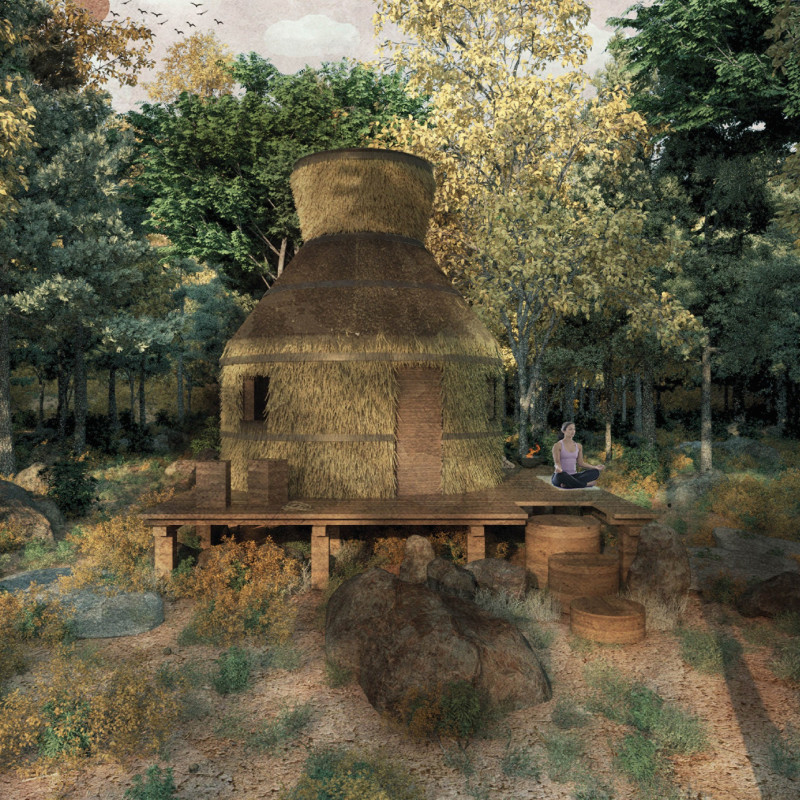5 key facts about this project
The primary function of the project is to provide an environment for meditation and introspection, facilitating a deeper connection between users and their natural surroundings. It incorporates various spaces designed for rest, meditation, and communal activities, creating a multifunctional retreat tailored to enhancing personal well-being.
The project's external design features a unique conical roof that transitions into a cylindrical base, an approach that efficiently manages water drainage while minimizing material usage. The structure is elevated on stilts, allowing natural air circulation and preventing moisture build-up. This elevation also enhances the visual connection to the forest canopy, reinforcing the relationship between the architecture and the environment.
The exterior of the building utilizes straw as cladding, which provides essential thermal insulation and presents an organic aesthetic that aligns with the site's natural colors. This choice of material underscores a commitment to sustainability and ecological harmony. The incorporation of wood as both a structural and aesthetic element further emphasizes this commitment, with a focus on locally sourced materials.
Inside, the layout is designed to maximize space and function. Key areas include a meditation space, equipped with comfortable mattresses for self-reflection, and a communal area for meals or relaxation. Extensive use of windows optimizes daylight, allowing natural light to illuminate the interior while framing views of the surrounding landscape. A notable design feature is the central opening in the ceiling, which not only invites light and air but also fosters a connection with the outdoor environment.
This project distinguishes itself from typical architectural retreats by its focus on geometric precision and its integration of natural materials that blend with the surroundings. The emphasis on user experience—through design choices that promote relaxation and introspection—sets this architectural venture apart.
The architectural ideas presented in "Forest" reflect a commitment to sustainable practices while also engaging users with their environment. For those interested in exploring this project further, detailed examination of the architectural plans, sections, designs, and the underlying architectural concept will provide valuable insights into its innovative approach.


























